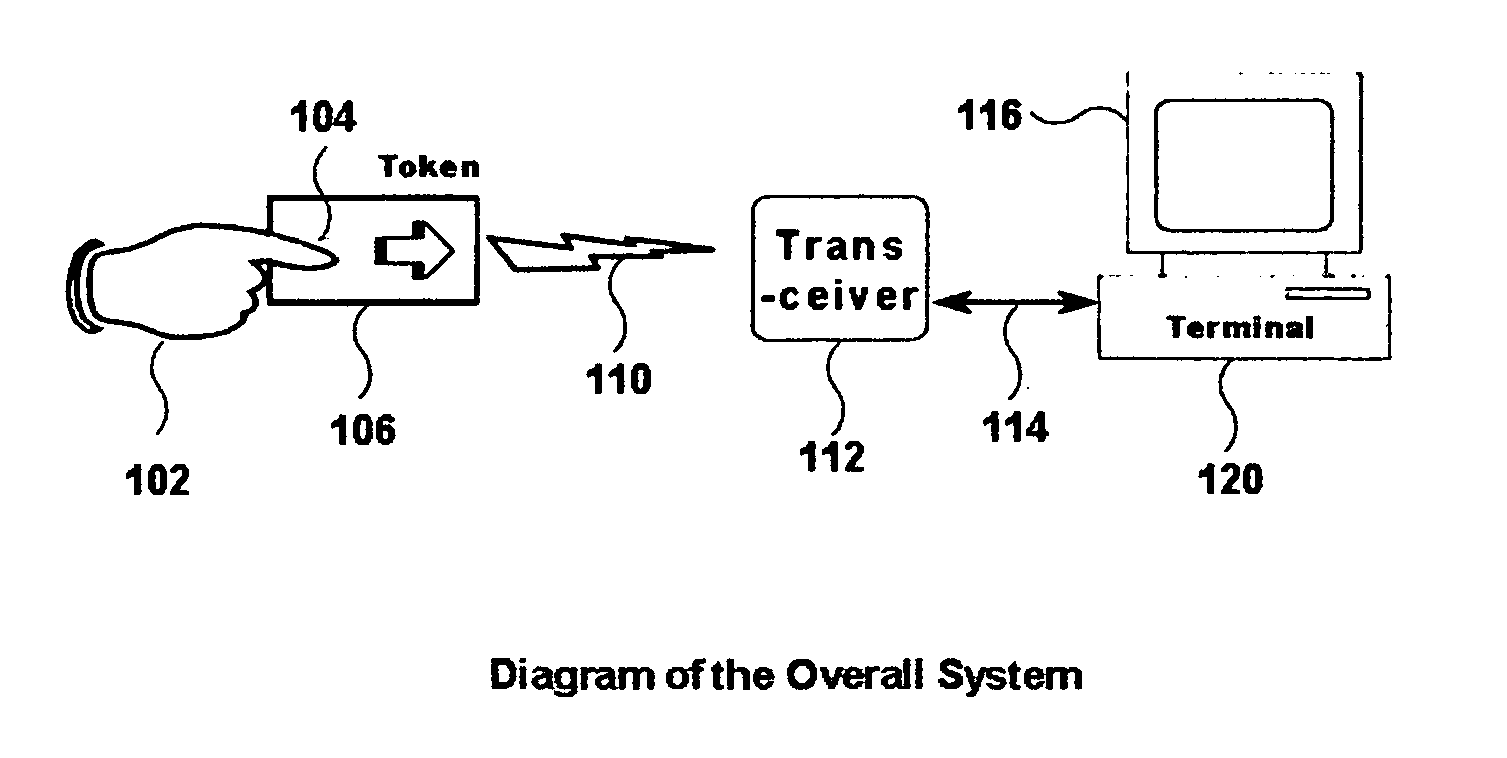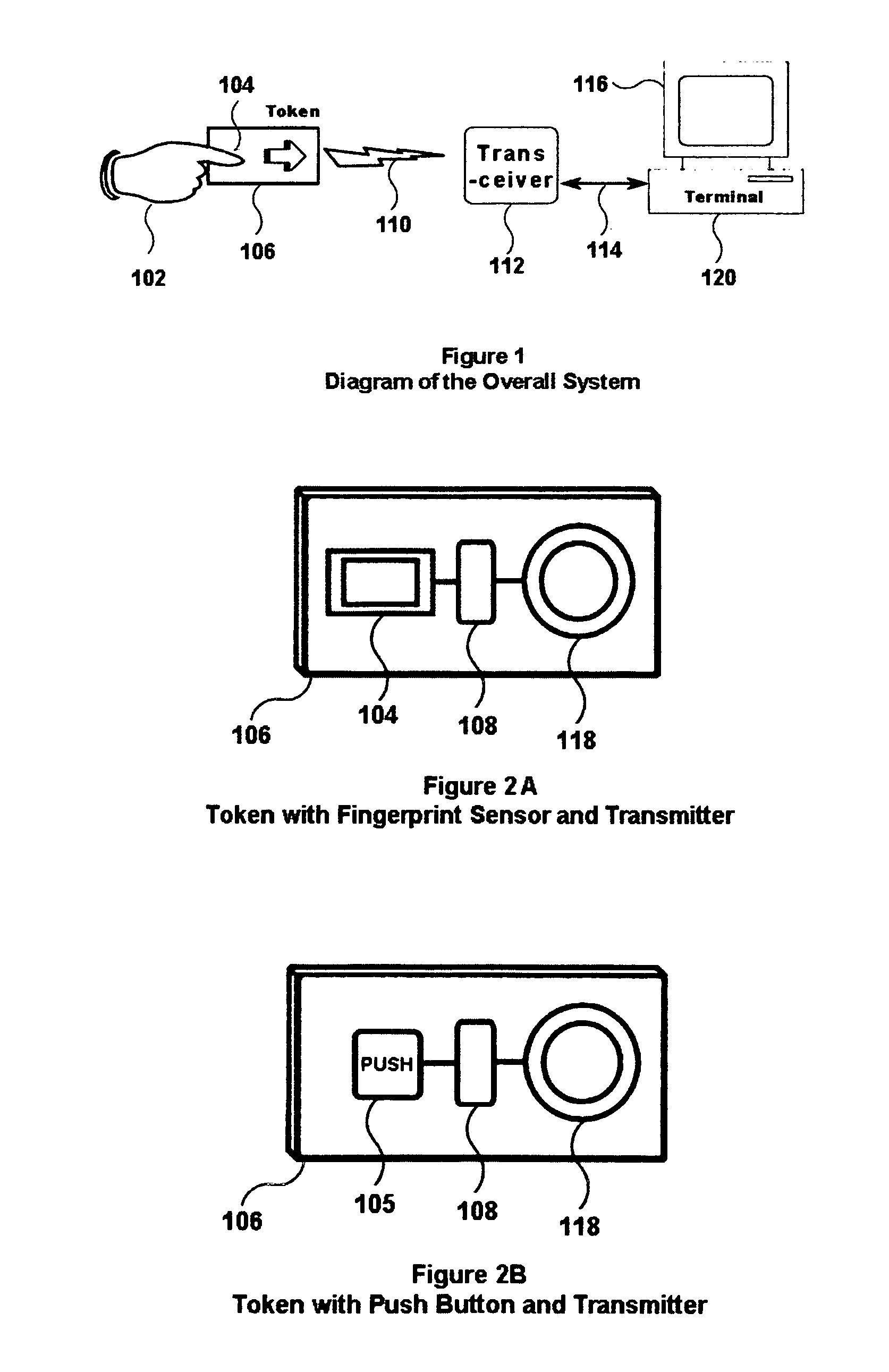Authenticating device with wireless directional radiation
a wireless directional radiation and authentication device technology, applied in the direction of testing/monitoring control systems, program control, instruments, etc., can solve the problems of inadvertent or deliberately gaining access to the wrong computing device by token holders, wireless transactions may radiate from the antenna of the token and propagate in an unintended direction, and the token holder may inadvertently or deliberately gain access to the wrong computing devi
- Summary
- Abstract
- Description
- Claims
- Application Information
AI Technical Summary
Benefits of technology
Problems solved by technology
Method used
Image
Examples
Embodiment Construction
[0048]There are many possible versions of the present invention, depending on application needs and configurations implemented.
[0049]One version of the present invention can be activated only upon, and in response to a signal generated by a token transceiver.
[0050]Another version of the present invention can be activated only after successful completion of biometric authentication of a prospective user fingerprint on the electronic token, after the user presents their finger and the fingerprint sensor processor matches the inputted fingerprint in storage and determines the inputted fingerprint to represent the presence of an authorized and pre-enrolled user.
[0051]Yet another version of the present invention can be implemented with an actuator (e.g., a push-type button, or a switch) on the electronic token; in such a case, other security techniques can be used external to the electronic token to verify that the user is who they claim to be (not subjects of this application). The swit...
PUM
 Login to View More
Login to View More Abstract
Description
Claims
Application Information
 Login to View More
Login to View More - R&D
- Intellectual Property
- Life Sciences
- Materials
- Tech Scout
- Unparalleled Data Quality
- Higher Quality Content
- 60% Fewer Hallucinations
Browse by: Latest US Patents, China's latest patents, Technical Efficacy Thesaurus, Application Domain, Technology Topic, Popular Technical Reports.
© 2025 PatSnap. All rights reserved.Legal|Privacy policy|Modern Slavery Act Transparency Statement|Sitemap|About US| Contact US: help@patsnap.com



